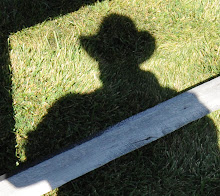
The image above was taken by a
collegue at work. She was formerly the photo buyer for
Walmart and she has a new Nikon digital camera that she loves. Her comments on the image are below:
Tips from an Expert
My name is Debby and I love to take digital images. I was formerly the Photo Buyer for Walmart, so I got to see lots of new and cool stuff. I shoot a Nikon D300 and just love it.
My daughters are sports “nuts” and I love taking pictures of them running, hitting and overall being your everyday sports hero.
I shot the image above and was it a challenge. Indoor Volleyball is fun but photographing the athletes can really try your patience. First the lighting is bad, second they don’t let you use a flash (imagine the spots in the athletes eyes) and third, there’s a ton of action out there and freezing the moment requires the right shutter speed.
I had to experiment and complete with about a half dozen other parents jockeying for the best shot. I’d like to share what I learned.
Invest in a good camera and read the instruction manual.
Digital images are FREE. Take lots of pictures. Some will be bad, but there will be some real gems!
Try different shutter and aperture settings on your camera to get different effects. Bad pictures are free too.
Lighting in a gym is horrible. You will have to play with the ISO settings on your camera to get the best shot. You may have to decide which is more important, the perfect density on a picture, or stopping the blur on a subject.
Buy a Photoshop program. My favorite it Adobe Photoshop CS3. My daughter prefers PICASSA.
My favorite trick…if your favorite picture was taken under poor lighting and seems washed out, turn it black and white!
As the technology of digital cameras improves and becomes less expensive more and more parents are becoming sports photographers. Have you been to a Little League game or High School volleyball match lately? At least a half a dozen parents are clamoring for the best shooting position. I am one of those proud parents. See you in the bleachers!!!
 Last week I travelled up 1-80 through Wyoming and up to an historic site called Martins Cove. Martins Cove is the site where in 1856, Mormon pioneers emigrating to Salt Lake City, were caught in an early winter storm. Rescuers made their way from Salt Lake to help bring the emigrants to Salt Lake City.
Last week I travelled up 1-80 through Wyoming and up to an historic site called Martins Cove. Martins Cove is the site where in 1856, Mormon pioneers emigrating to Salt Lake City, were caught in an early winter storm. Rescuers made their way from Salt Lake to help bring the emigrants to Salt Lake City.




































a.jpg)











